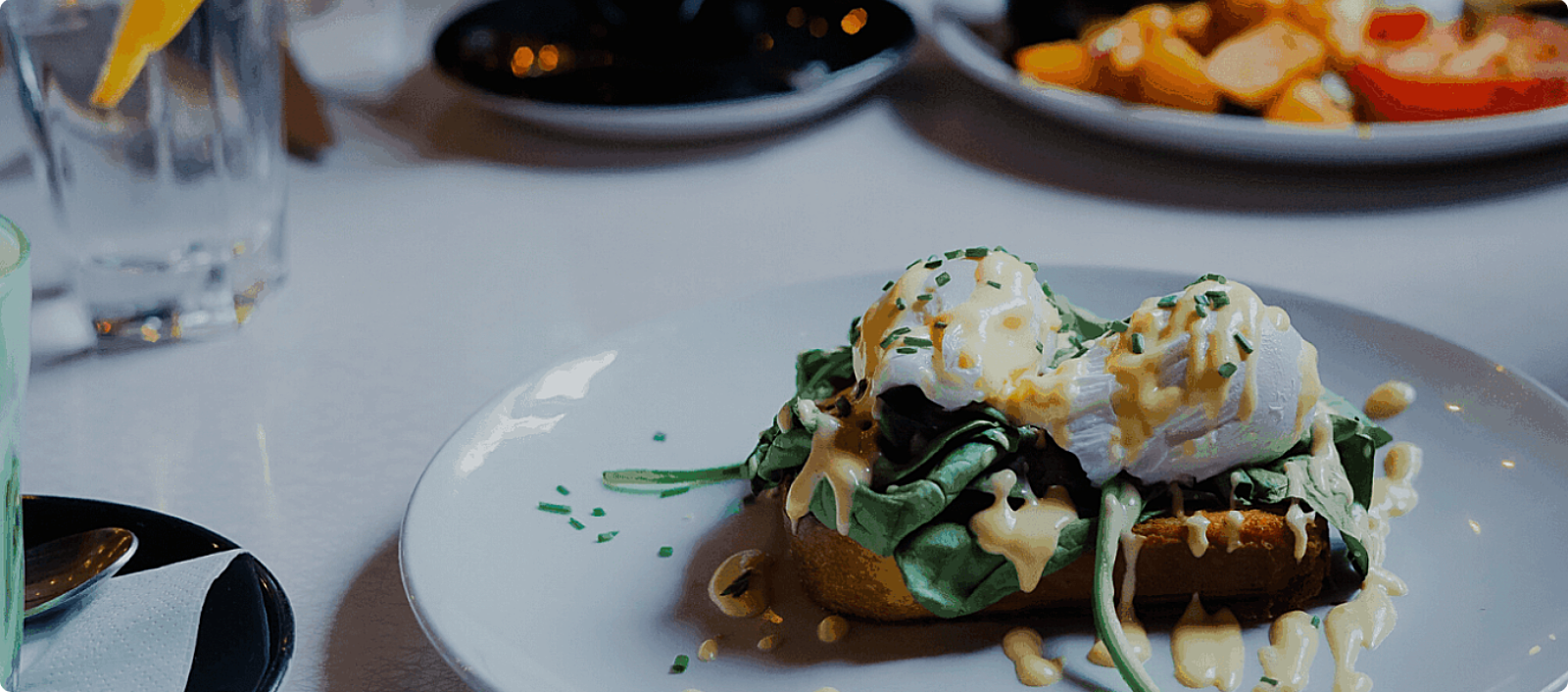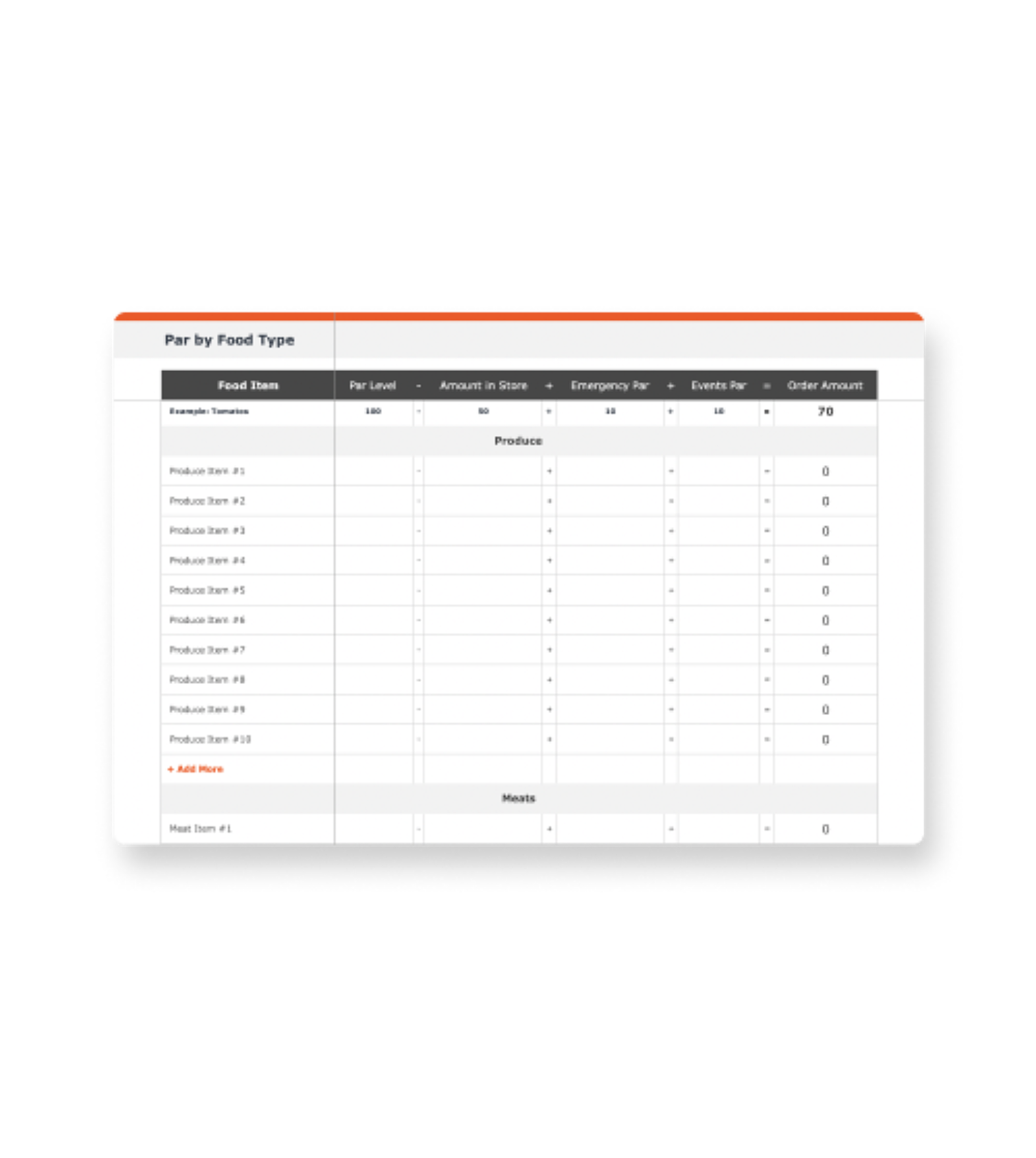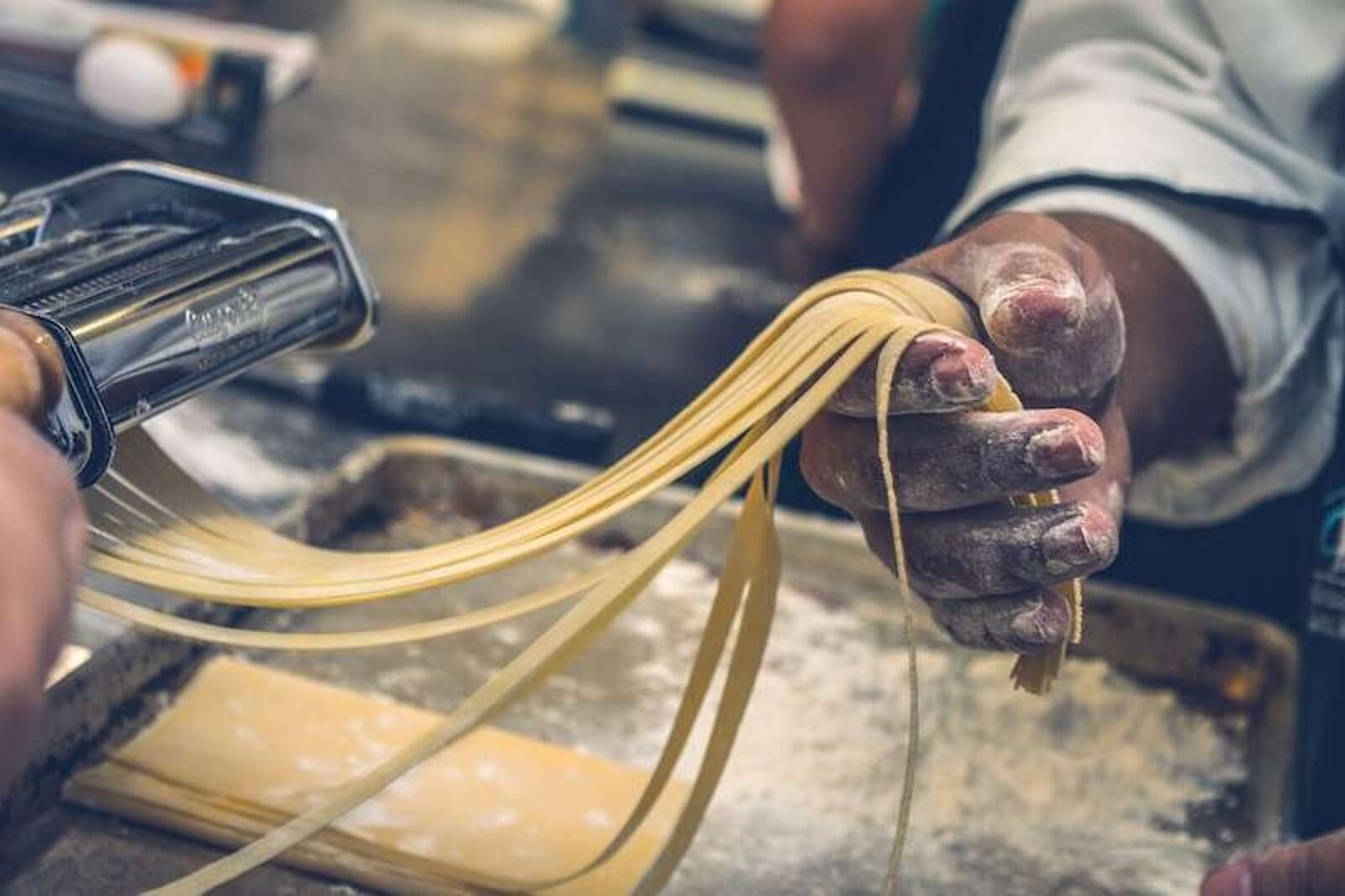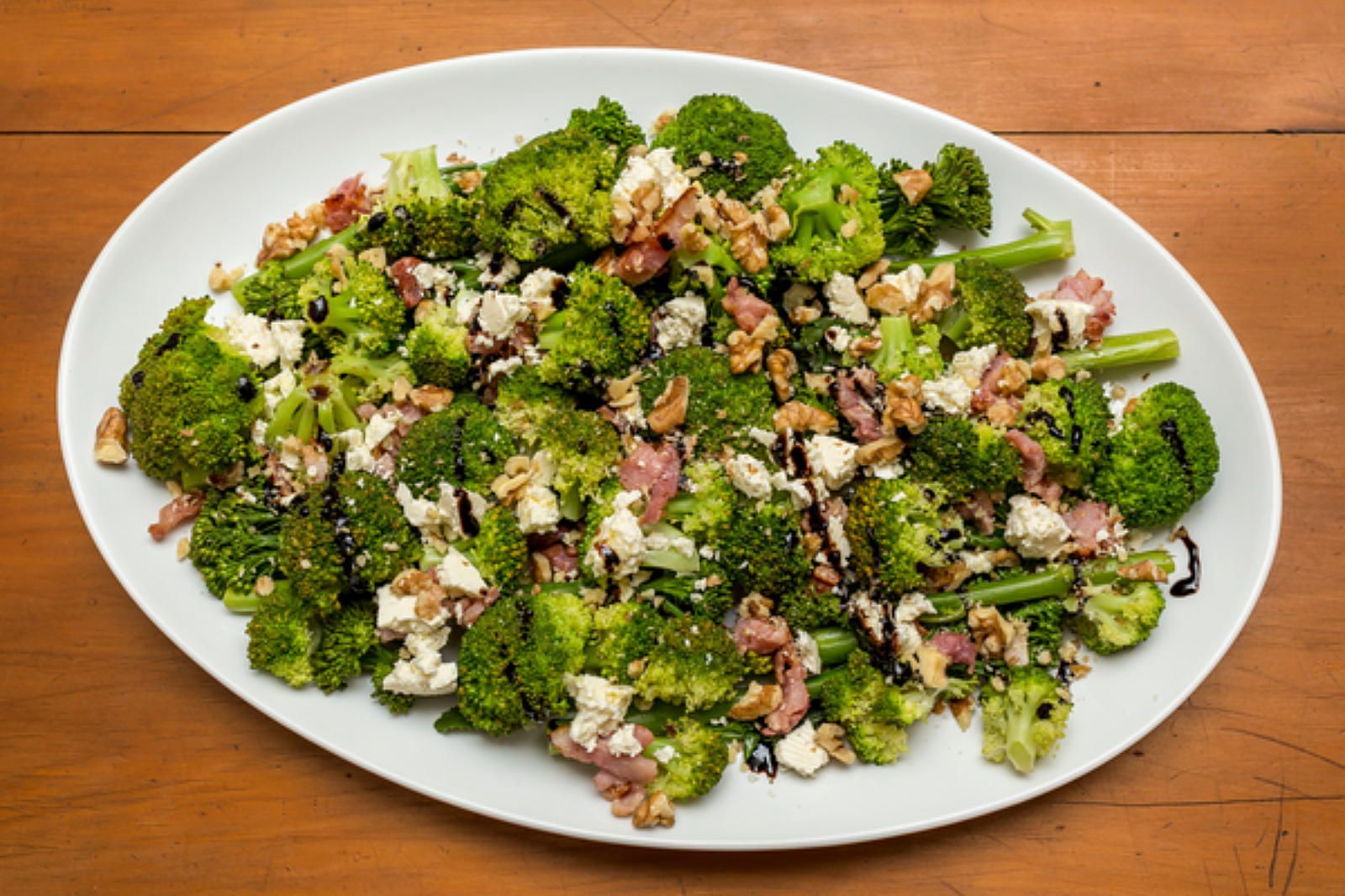
How to Set Up a Par Inventory Sheet
Inventory management doesn't have to be all headaches. Learn how to set up a system for your restaurant using a series of par sheets.

AJ BeltisAuthor


Par Inventory Sheet Template
Seamlessly track inventory with the help of this customizable par inventory sheet template.
Get free downloadAnyone who's ever had to do inventory management for a restaurant knows that, no matter what method you use, food inventory tracking can cause all kinds of headaches. But it's an essential task for tracking and taking control of your restaurant costs.
Some people stick to using an inventory management solution integrated with their point of sale system, others still use good old pen and paper. Another way to do it is by setting up a par inventory sheet. And that's what we'll be diving into below.
In this article, we'll walk through how you can set up an inventory management system for your restaurant using a series of par sheets. Follow along by downloading these restaurant par inventory sheet templates.
Par Inventory Sheet Template
Seamlessly track inventory with the help of this customizable par inventory sheet template.

What is Par Inventory?
Par inventory is a method of inventory tracking for restaurants.
Decision-makers will establish a "par," or a minimum amount of supply required in-store after each food inventory delivery.
Standard par is the amount you expect to have in-house on a given day, so pars can and do change on factors like seasonality, day of the week, weather, parties, events, and more.
How is a Par Inventory Level Established?
The first factor you'll want to look at when setting par inventory levels is how often you get items delivered. While more perishable foods like bread, produce, dairy, or eggs may be delivered daily, you might only have other ingredients like salad dressing or flour delivered once a week.
The more suppliers you have, the longer this process will take, but chances are you already have most of this information already documented. If you're starting from scratch, though, refer to your order slips and receipts from your suppliers.
Next, determine how much inventory of each food item is depleted between each delivery to set the par order amount.
Here's an example
If your frozen food supplier drops french fries off every Tuesday, your set par level for fries should be your standard weekly usage of fries plus a little extra in case of emergency, spillage, waste, or big orders.
So if you go through 200 french fry orders per week, and you'd like a 10% safety net, you would always want enough fries to cover 220 orders of fries after each inventory delivery.
If one bag of fries is enough to provide 10 side orders, your par for french fries would be 22 bags, since 220 orders / 10 orders per bag = 22 bags of fries.
Here's how you get to that number:
Standard Inventory Depletion + Safety Net = Par Level
20 Bags + (10% x 20 Bags) = Par Level
20 Bags + 2 Bags = Par Level
22 Bags = Par Level
This is how you set standard par for any food or ingredient in your restaurant.
Ordering From Suppliers Based on Par Levels
When you place your food supply order, compare your actual amount of food with your set par level.
Your par level is not your order amount, unless you deplete your entire supply of inventory. Your order amount is what you need to restock and meet par needs.
Let's go back to the french fry example, where you want 22 bags on hand after each delivery. Maybe last week was slow, so you only went through 17 bags. Whenever you order inventory, you want to start with your par amount (in this case, 22 bags) and subtract your remaining amount (5 bags) to get your inventory order (17 bags).
Par Level - Remaining Inventory = Order Size
22 Bags - 5 Bags = Order Size
17 Bags = Order Size
In this example, 17 bags is the order you should place in an everyday situation, as this will replenish your inventory to the necessary par level of 22 bags.
But what about situations when more food may be needed?
If you get a catering order a few days out or are told by your suppliers that a big storm may impact food availability, you can go ahead and alter your order size.
Maybe next week is National French Fry Day, and you know you'll need extra inventory to meet the demand of your fry-hungry customers. In that case, order the 17 bags to meet regular demand plus any additional required inventory. If you have a POS system that records your annual restaurant sales data, you could even go back to last year's sales on National French Fry Day to get an idea of how many extra bags you should order from your supplier.
How to Use a Restaurant Par Inventory Sheet

Par inventory sheets make the process of setting these par levels and determining the minimum order amount that much easier for you.
Using the template shared at the beginning of this article, simply follow the method described above: input your par amounts, remaining inventory, and emergency/events par in the sheets.
The computerized par sheet will do the math for you and the output will be the order amount you ask suppliers for.
Below are some frequently asked questions you might have about inventory tracking, specifically about par sheets.
Should par sheets be printed or computer-based?
There are pros and cons to each, but we suggest computer-based par sheets. Printed par sheets are more portable and can be attached to your clipboard, but you'll have to re-print them every time you have a new inventory order, which could be daily. You could also view the online par sheets on a tablet or other mobile device while you're walking your back of house.
Even if you print the sheets 100 at a time, that'll leave you with a lot of wasted money, paper, and ink. Plus, paper sheets are more difficult to change numbers on and don't do the math for you, increasing the chance for human error.
Computer-based par sheets can easily be changed every time you make an inventory order and new numbers can replace old ones. But, unless you have a tablet or laptop, it can be inconvenient to enter the numbers into the computer.
Whatever you choose, it's important to stick with a system you're comfortable with.
Restaurant Cost Control Guide
Use this guide to learn more about your restaurant costs, how to track them, and steps you can take to help maximize your profitability.

Should par sheets be organized by food type or by supplier?
If you have one supplier (or a supplier that delivers the majority of your inventory), it'd make the most sense to organize your par sheet by food item, not supplier.
This way, when you're looking at one part of your back of house, you can stick to one section of the sheet.

If you do have multiple food suppliers, though, they probably all deliver on different days. If that's the case for your restaurant, you can break up your par sheets by supplier, not by food item. This way, your team can do a sweep of the entire back of house and take note of which items need a restock, depending on which supplier is coming next.
Organizing by supplier is also helpful in ensuring order accuracy. Upon delivery, compare your par inventory sheet – which doubles as your ordering template – with your receipt from suppliers to double check accuracy.
Are there better restaurant inventory solutions than par sheets?
Setting par has become best practice in the industry. It's a simple way of understanding how much inventory to have on hand for peace of mind, organization, and sales forecasting.
That said, there are better ways to do the actual inventory tracking part. A restaurant inventory management system tied to your point of sale tracks depletion of every ingredient in real time. Using a system like this, you can look at how much inventory was used at the end of each day, compare that number to set par amounts, and make orders based on that data, rather than running around from walk-in to walk-in.
Download the Back of House Guide to get par inventory sheets for your restaurant.
Related Restaurant Financial Resources
Back of House Management Guide and Resource Kit
This guide and resource kit will help you develop an efficient back of house management system to ensure quality and consistency in your restaurant’s kitchen.

Is this article helpful?
DISCLAIMER: This information is provided for general informational purposes only, and publication does not constitute an endorsement. Toast does not warrant the accuracy or completeness of any information, text, graphics, links, or other items contained within this content. Toast does not guarantee you will achieve any specific results if you follow any advice herein. It may be advisable for you to consult with a professional such as a lawyer, accountant, or business advisor for advice specific to your situation.
Read More
Subscribe to On the Line
Sign up to get industry intel, advice, tools, and honest takes from real people tackling their restaurants’ greatest challenges.






